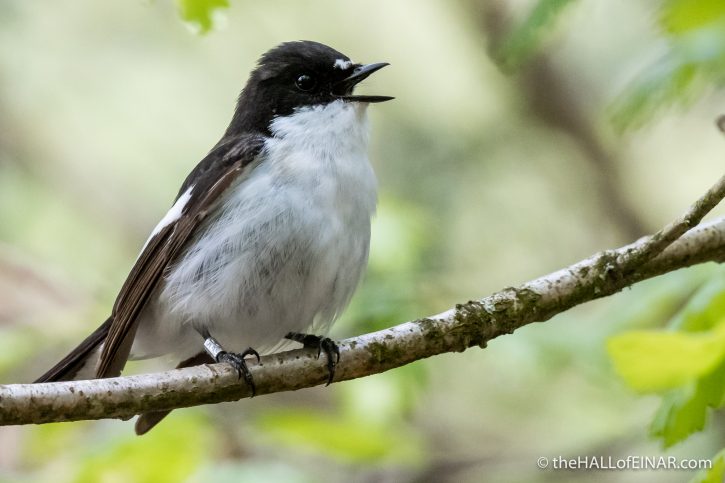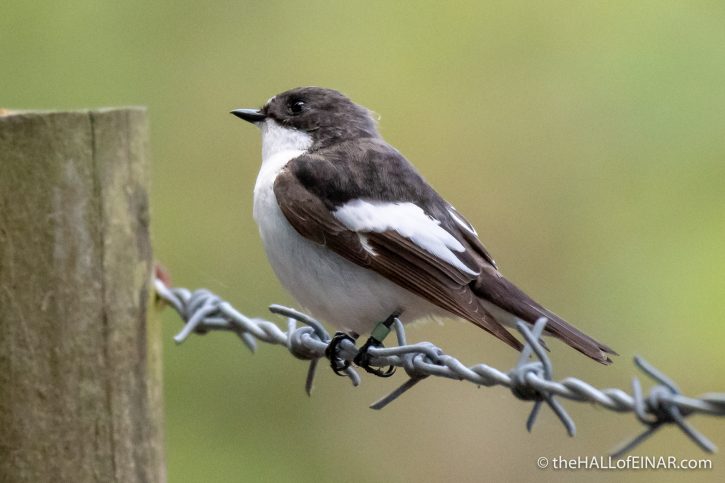Flied Piecatchers
Every April and May these tiny birds fly from West Africa to ancient woodlands in Wales and the west of England. Pied Flycatcher behaviour has been finely tuned by generations of successes and failures of their timing of their migration, pinpointing the best spots, and exploiting the time of peak caterpillar.

Too early and they’ll get the best nest sites but not have enough food. Too late and there’ll be plenty to eat but nowhere to raise a family. It’s a complex balancing act which we are destroying with our ongoing man-made climate catastrophe. A few nest boxes might help, but what they really need is ancient oak woodland, and that takes 100 years to make more of.
Here’s my explanation of the latest research into the effects on their lives of our destruction of their natural timing:
The UK population has declined by 53 per cent since 1995 (Baillie et al. 2014).
So much is yet to be discovered about Pied Flycatchers. We have ringed 645,000 Pied Flycatchers in the UK since 1909, and yet have found just five UK breeding birds again (and none of the ones which hatched in the UK) in their African wintering grounds. Ringing 129,000 in summer to only find one in winter is a spectacular amount of effort over the past 110 years, with very little to show for it.
The males appear to arrive first and then sing to defend a territory, having found a suitable nesting site:

Females choose a mate, lay eggs and then are frequently deceived as the male flies off out of earshot to set up another territory in his spare time, looking to cheat another female into mating and egg-laying. He then goes back to his first mate and feeds her and his first family properly and gives the second female far less attention. A few of my friends have been in that situation.
Second females often suffer from this polygyny, having 60% fewer offspring. No wonder the male goes 200-3,500 metres away to set up his ‘alternative living arrangements’.
You wouldn’t guess it from looking at him, would you?

You can catch up with all the citizen science and research at www.piedfly.net.


